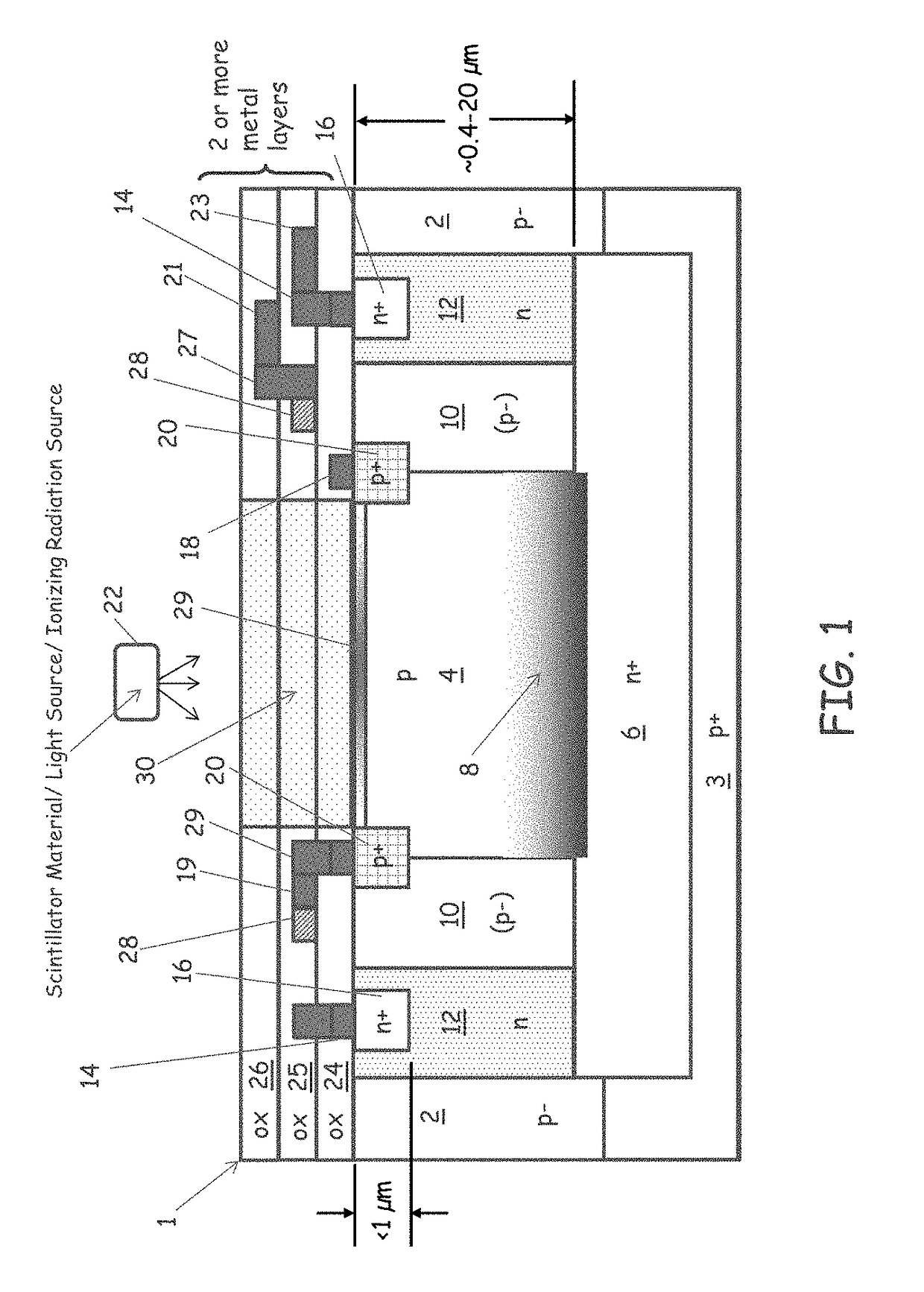Solid state photomultiplier using buried P-N junction
a photomultiplier and solid-state technology, applied in the direction of diodes, semiconductor devices, radiation control devices, etc., can solve the problems of apds having performance limitations, limited pmts, and high voltage,
- Summary
- Abstract
- Description
- Claims
- Application Information
AI Technical Summary
Benefits of technology
Problems solved by technology
Method used
Image
Examples
Embodiment Construction
[0021]Described herein is a photodiode having a buried semiconductor layer of a high doping concentration, according to some embodiments. The photodiode may be operated as a Geiger photodiode, such that it is reverse biased above its breakdown voltage. An array of such photodiodes can be used to form a solid state photomultiplier (SSPM) that detects electromagnetic radiation. A radiation detector can be produced that includes a scintillator material and a SSPM. The SSPM can detect light produced by the scintillator material in response to incident radiation, including ionizing and non-ionizing radiation. The photodiode described herein may be used for photodetection or for detection of any phenomenon that may generate an electron-hole pair in the diode that may cause the diode to undergo a self-sustained avalanche.
[0022]FIG. 1 shows a cross section of a photodiode structure 1 having a buried layer, according to some embodiments. Also shown in FIG. 1 is a material 22 that may produce...
PUM
 Login to View More
Login to View More Abstract
Description
Claims
Application Information
 Login to View More
Login to View More - R&D
- Intellectual Property
- Life Sciences
- Materials
- Tech Scout
- Unparalleled Data Quality
- Higher Quality Content
- 60% Fewer Hallucinations
Browse by: Latest US Patents, China's latest patents, Technical Efficacy Thesaurus, Application Domain, Technology Topic, Popular Technical Reports.
© 2025 PatSnap. All rights reserved.Legal|Privacy policy|Modern Slavery Act Transparency Statement|Sitemap|About US| Contact US: help@patsnap.com



